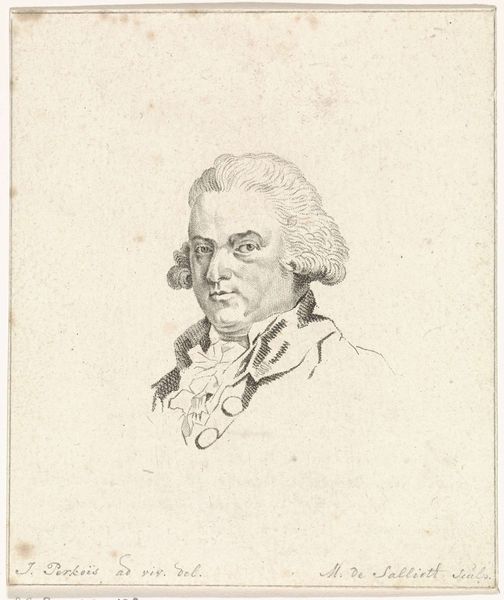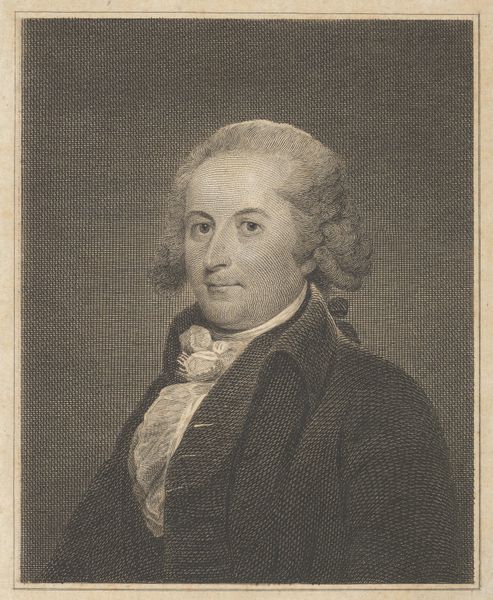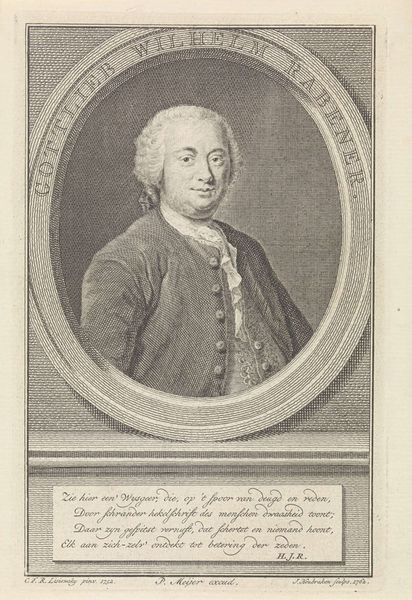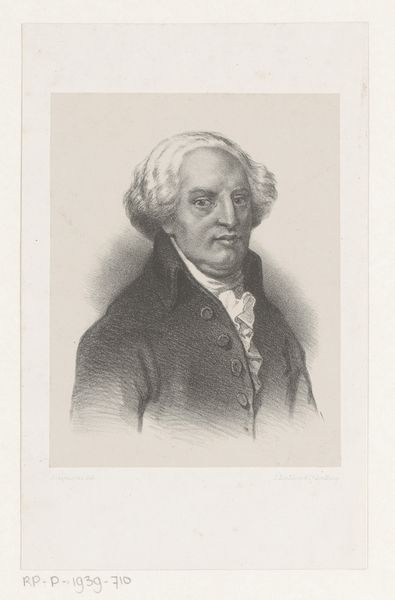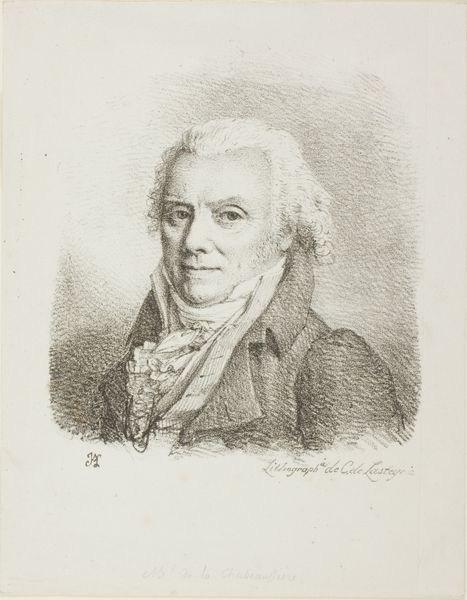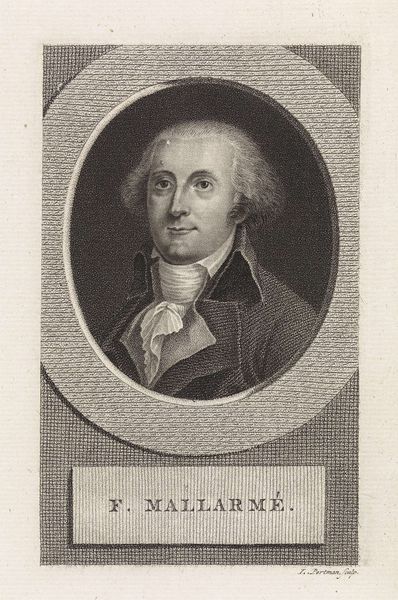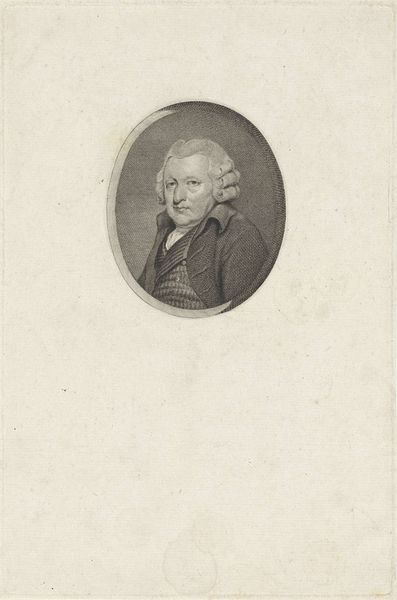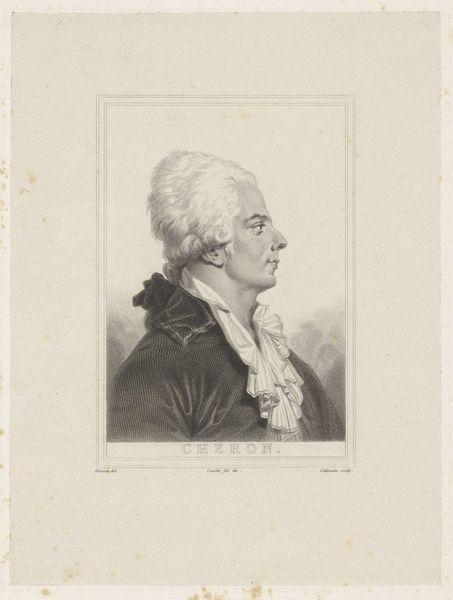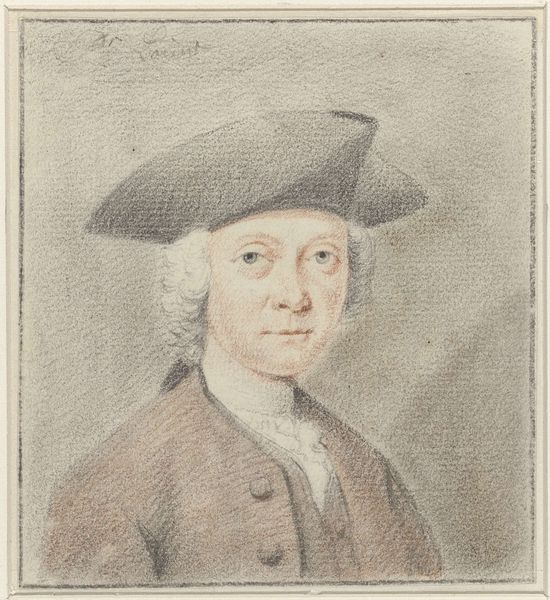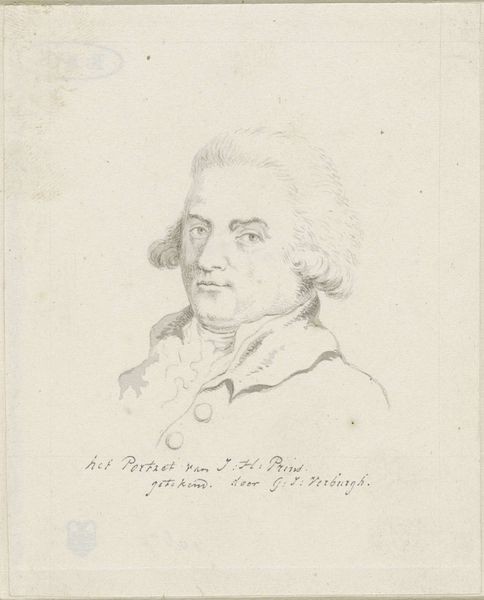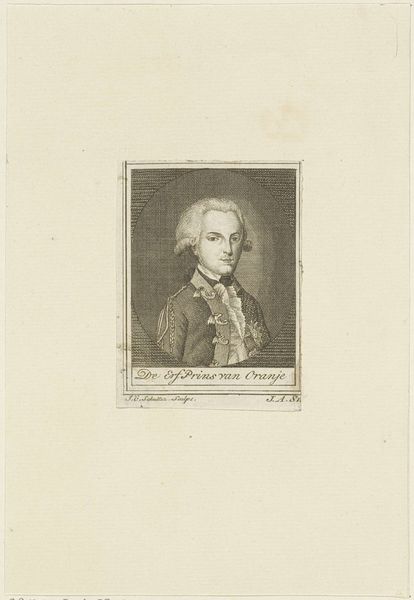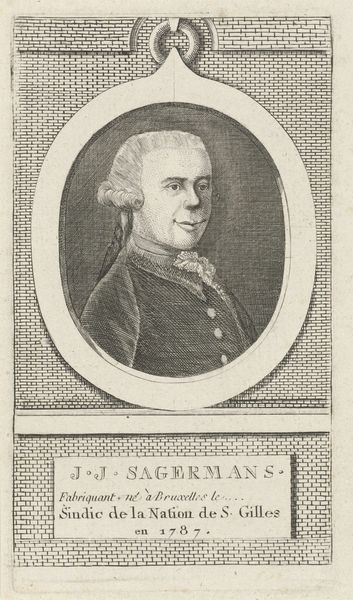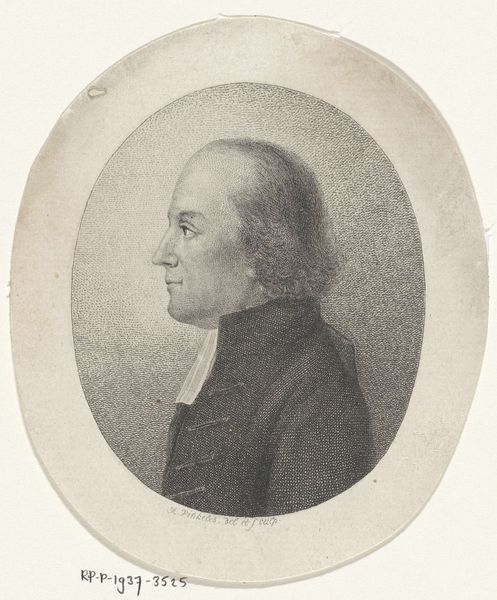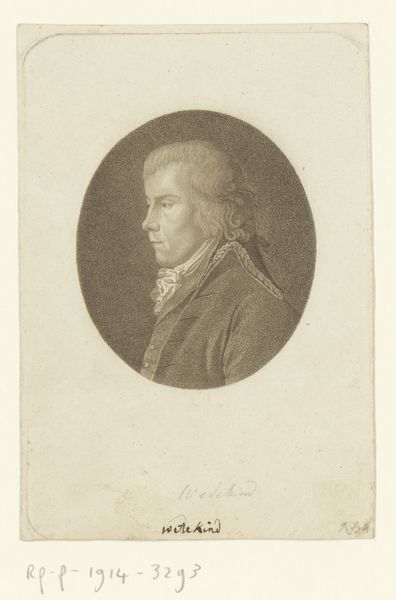
drawing, print, engraving
#
portrait
#
drawing
# print
#
old engraving style
#
caricature
#
line
#
portrait drawing
#
academic-art
#
engraving
#
realism
Dimensions: height 56 mm, width 49 mm
Copyright: Rijks Museum: Open Domain
Curator: Let's discuss "Portret van Johannes Huibert Prins," a drawing and print dating circa 1785-1914. My immediate impression is that it’s a starkly formal representation. The line work is precise, almost clinical. Editor: It does project a certain coolness. But look closer – the subject, despite his formal attire, has a surprisingly vulnerable gaze. Given the period, the piece feels like a critique of power and privilege rather than a celebration. Curator: Interesting point. However, the cross-hatching and stippling techniques used create depth and texture that shouldn't be overlooked. The artist's skillful rendering of light and shadow emphasizes the subject's facial structure, revealing what appears to be a meticulous approach to realism. Editor: Perhaps. But that realism also traps the subject within the confines of his social status. Consider the elaborate wig, a symbol of societal artifice, or the way the ruffled collar acts as a cage around his neck. Is the artist subtly questioning the very ideals of academic art through these visual cues? Curator: A potential reading, certainly. Yet I am more concerned with how the composition leads the eye—the slight turn of the head, the subtle asymmetry in the features, the calculated balance between light and dark that brings this face to life. Editor: And what of the societal life reflected *by* that face? We see a portrait that may hint at social unease through its details. The ambiguity could be a subversive statement about the societal constraints placed upon individuals during that period, how systems of power can box us in and confine our very being. Curator: I agree that further consideration of context will shed more light on the narrative potential of the piece. The interplay between intention, method, and representation generates the artistic interest we perceive. Editor: Precisely! Examining this work critically through the lens of cultural narratives is essential for any study of this art. Hopefully our chat inspires reflection beyond aesthetics to societal issues.
Comments
No comments
Be the first to comment and join the conversation on the ultimate creative platform.
